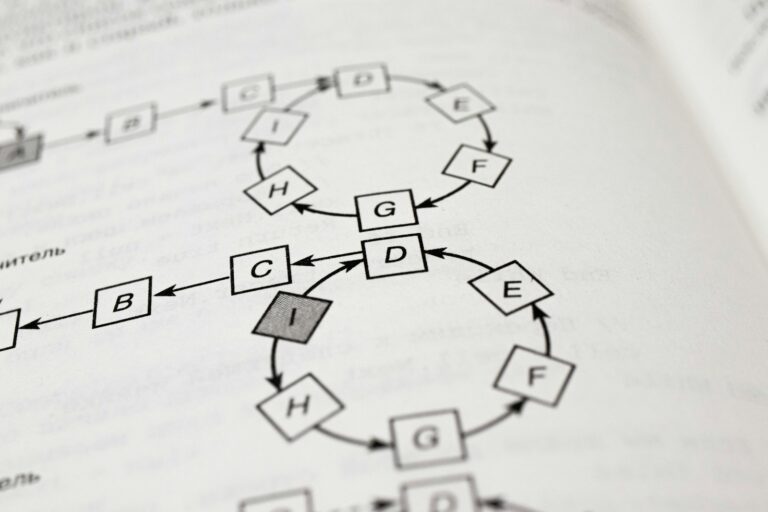Tree traversal is a foundational concept in computer science and is widely studied in the curriculum of B.Tech and BCA programs. It refers to the systematic method of visiting every node in a tree data structure, exactly once, in a particular order. Traversing a tree is critical for numerous applications such as expression evaluation, syntax tree handling, data serialization, and search algorithms. This chapter from the Unit 2 Notes Data Structures is a comprehensive study of the three major types of tree traversal techniques: Preorder, Inorder, and Postorder Traversal. As a key topic in Engineering Study Material, students must understand these methods both theoretically and through implementation, especially if they aim to access Free Download PDF resources or prepare for internal exams.
A tree is a non-linear data structure made up of nodes connected by edges, and the topmost node is referred to as the root. Every node (except the root) has one parent, and can have zero or more child nodes. The most commonly studied tree is the binary tree, where each node can have at most two children. Before diving into traversals, it is essential to understand the basic terminologies involved:
- Root: The topmost node in the tree
- Parent and Child: Directly connected nodes
- Leaf Node: A node with no children
- Subtree: Any node with its descendants
- Depth: The level of a node from the root
- Height: Maximum depth of the tree
Tree traversal techniques are divided into two main categories: Depth-First Traversal and Breadth-First Traversal. The scope of this chapter is focused entirely on depth-first strategies, specifically Preorder, Inorder, and Postorder traversal.
Preorder Traversal
In Preorder traversal, the nodes are visited in the following order: Root -> Left Subtree -> Right Subtree. It means that we first process the root node, then recursively traverse the left subtree, followed by the right subtree.
Algorithm (Recursive):
- Visit the root
- Traverse the left subtree in preorder
- Traverse the right subtree in preorder
Example: Consider the binary tree:
A
/ \
B C
/ \
D EPreorder Traversal Output: A B D E C
ASCII Diagram Representation:
A
/ \
B C
/ \
D EIn Preorder traversal, the function visits the node itself before visiting its children. This is particularly useful in copying the tree, serializing a tree structure, and is the base of expression notation like Polish Notation.
Implementation (C++ style pseudo-code):
void preorder(Node* root) {
if(root != NULL) {
cout << root->data << " ";
preorder(root->left);
preorder(root->right);
}
}Inorder Traversal
In Inorder traversal, the sequence is: Left Subtree -> Root -> Right Subtree. This method is primarily used with binary search trees (BST) because it retrieves data in sorted order.
Algorithm (Recursive):
- Traverse the left subtree in inorder
- Visit the root
- Traverse the right subtree in inorder
Inorder Traversal Output: D B E A C
ASCII Diagram Representation:
A
/ \
B C
/ \
D EThis traversal is very important for searching operations in BST, generating infix expressions, and displaying nodes in ascending order.
Implementation (C++ style pseudo-code):
void inorder(Node* root) {
if(root != NULL) {
inorder(root->left);
cout << root->data << " ";
inorder(root->right);
}
}Postorder Traversal
Postorder traversal follows the sequence: Left Subtree -> Right Subtree -> Root. This method is particularly useful when you want to delete the tree, as it ensures all children are deleted before the parent node.
Algorithm (Recursive):
- Traverse the left subtree in postorder
- Traverse the right subtree in postorder
- Visit the root
Postorder Traversal Output: D E B C A
ASCII Diagram Representation:
A
/ \
B C
/ \
D EPostorder traversal is most often used in deleting the tree, evaluating postfix expressions, and resource cleanup in compiler design.
Implementation (C++ style pseudo-code):
void postorder(Node* root) {
if(root != NULL) {
postorder(root->left);
postorder(root->right);
cout << root->data << " ";
}
}📌 Insert Diagram: Combined View of All Tree Traversals with Same Tree
Comparison Table of Tree Traversals
| Traversal Type | Order of Visiting Nodes | Application |
|---|---|---|
| Preorder | Root -> Left -> Right | Copying Tree, Prefix Expression |
| Inorder | Left -> Root -> Right | BST Traversal, Sorting |
| Postorder | Left -> Right -> Root | Deletion, Postfix Expression Evaluation |
🔹 Short Answer Questions (2-3 Marks)
- What is preorder traversal?
- It is a tree traversal method where the root node is visited first, followed by the left and right subtrees.
- Why is inorder traversal important in BSTs?
- It retrieves the values of the BST in sorted ascending order.
- Define postorder traversal.
- A traversal where the left and right children are visited before the root node.
- State one application of preorder traversal.
- It is used in copying or cloning tree structures.
- Which traversal is best for deleting a tree?
- Postorder traversal, as it deletes child nodes before the parent node.
- List the traversal output of this tree in inorder: A -> B -> C
- Inorder output: B A C
- Is tree traversal a linear or non-linear algorithm?
- Tree traversal is applied to a non-linear data structure.
🔸 Long Answer Questions (5-10 Marks)
- Explain Preorder, Inorder, and Postorder traversal with an example binary tree.
- These three types of traversal determine the order in which nodes are visited. For the tree with root A, left child B, and right child C where B has children D and E:
- Preorder: A B D E C
- Inorder: D B E A C
- Postorder: D E B C A
- These are used in various algorithms like tree copying, expression evaluation, and resource cleanup.
- These three types of traversal determine the order in which nodes are visited. For the tree with root A, left child B, and right child C where B has children D and E:
- Describe how inorder traversal is beneficial in binary search trees.
- In BSTs, the left subtree has smaller values and the right has larger values than the root. Inorder traversal ensures that nodes are visited in sorted order, which is useful in displaying, searching, and verifying the correctness of BSTs.
- Write recursive functions in C++ for all three tree traversals. Explain the logic.
- The logic involves visiting nodes in the order defined by the traversal type, using recursive calls to process subtrees. The provided code samples illustrate the visit-first, left-right ordering.
- Compare and contrast all three depth-first traversals with suitable use-cases.
- Preorder is used in copying, Inorder for sorting in BSTs, and Postorder in deleting trees or postfix evaluation. Each has unique ordering and application scenarios, making them vital in different computational tasks.
📝 Chapter Summary
Tree traversal is the process of visiting each node in a tree in a particular orderPreorder traversal follows Root-Left-Right and is used in copying treesInorder traversal follows Left-Root-Right and retrieves BST data in sorted orderPostorder traversal follows Left-Right-Root and is useful for deleting or evaluating postfix expressionsEach traversal has unique applications in tree manipulation and expression handlingAll traversals can be implemented recursively with simple logicThe order of node visitation greatly affects the outcome of operations such as printing, evaluating, and copying trees
📘 Model Paper / Sample Internal Exam Questions
- Explain Inorder, Preorder, and Postorder traversal techniques with an example binary tree.
- Write a recursive C++ function for postorder traversal and explain its working.
- Compare all three depth-first traversal methods in terms of order and applications.
- Discuss the role of inorder traversal in a Binary Search Tree.
- Given a binary tree, list the preorder, inorder, and postorder traversal sequences.



